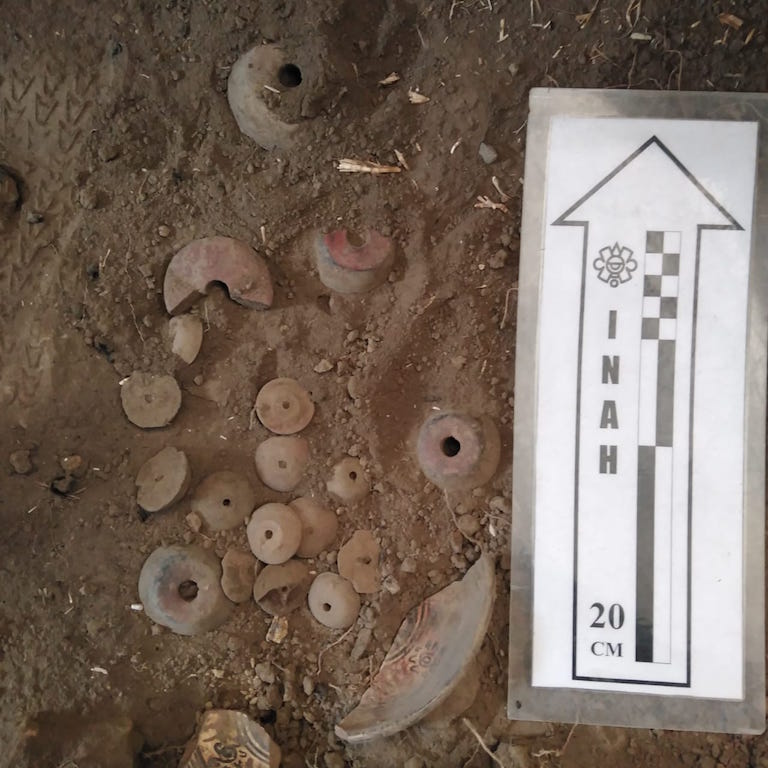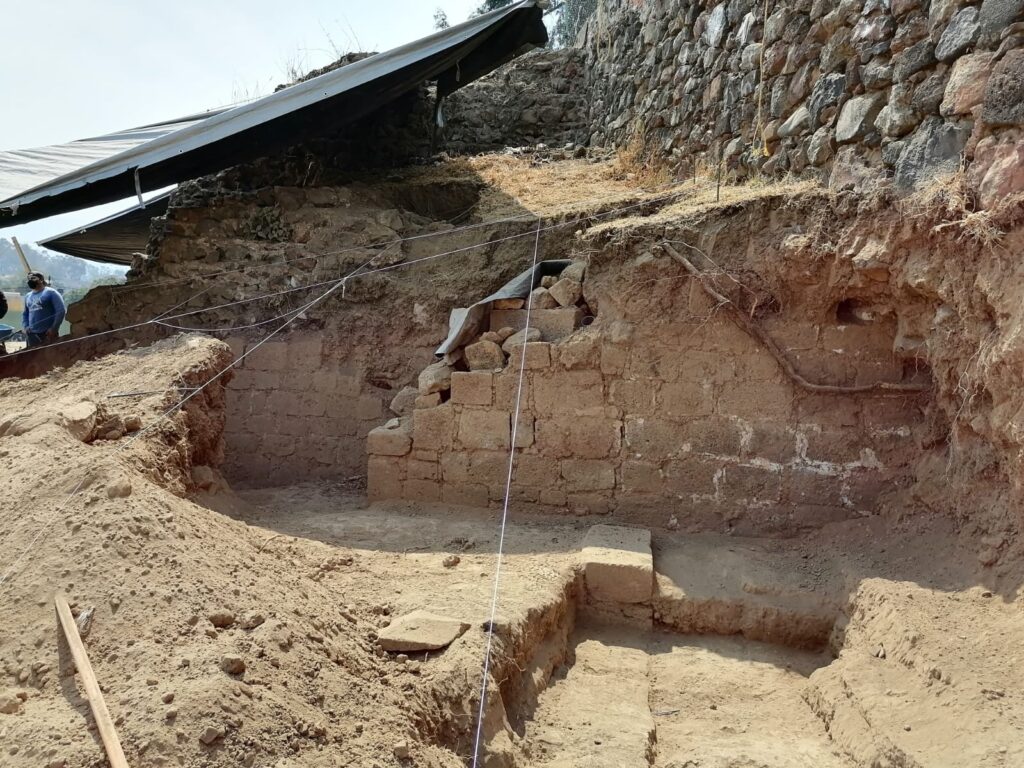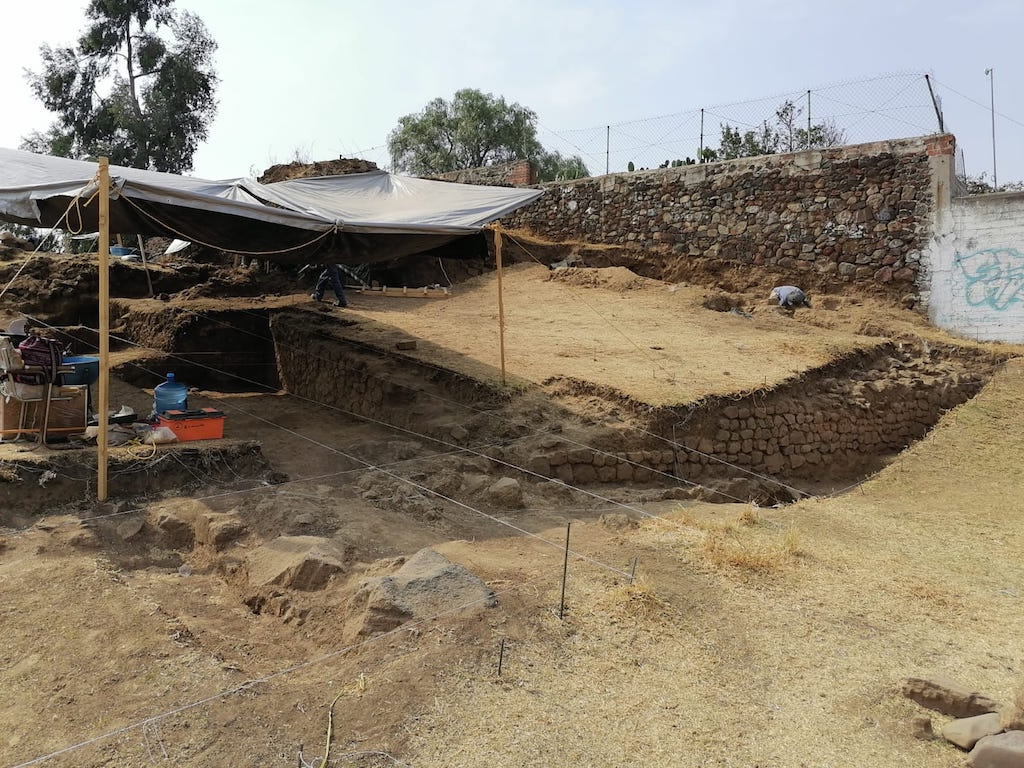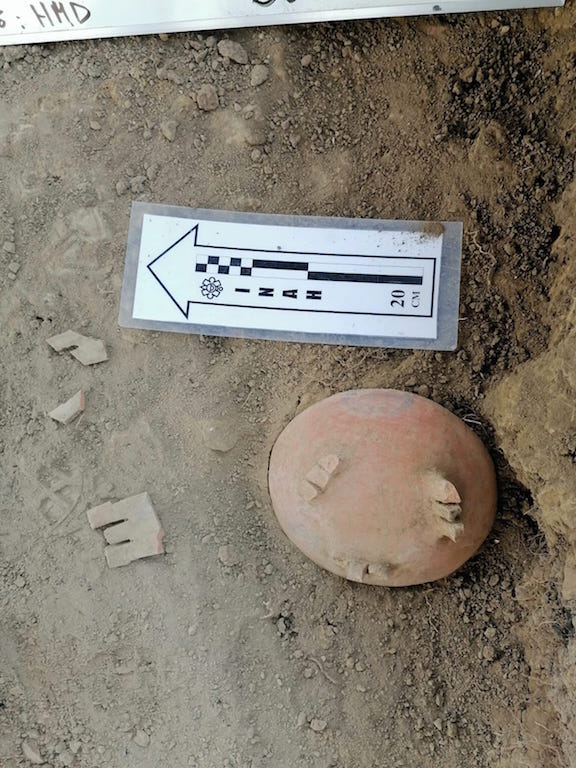New pyramid discovered in Mexico
Archaeologists have found a new pyramid in Tlacochcalco (modern-day Mexico). The town was a political centre during the pre-Hispanic period.
According to Mexico’s National Institute of Anthropology and History, the ruins of Tlacochcalco are located in the modern-day town of Tlalmanalco.
According to the archaeologist of INAH, Herve Victor Monterrosa Desruelle”This area,” he explained, “is a continuum of platforms and levellings, reflecting a pre-Hispanic occupation, but unfortunately, houses have been built on them, although in this case, the owner of the property where the remains were located, when he wanted to build, turned to the Institute in order to examine a mound found on his land, which when analysed revealed the structure.”

Monterrosa explained that the elements of the foundation discovered are only a third of the volume of the construction, the rest was razed to the ground by the urban sprawl.
The pyramid was buried under a mound. Its base was 12 to 18 meters long and 9 meters tall. The pyramid had three levels, but only a third of the original structure has been preserved. Thus, the base originally measured 35 meters by 45 meters.

“In the clearance of the building, by means of approach shafts, we located different elements such as the walls, which are being attended to along the length of each facade.
Once this intervention is done, the second phase will be to give volume and solidity to the structure, which is deteriorated, especially in the north-western part, by means of consolidation and restitution works”.
Another of the specialists involved in the project, developed by the Ministry of Culture through the Centro INAH Estado de Mexico, the archaeologist and architect Ricardo Arredondo Rojas, pointed out that in the first section, a number of rooms were found with the remains of stucco floors, with which the height of the walls could be determined.
Architecturally, he said, the structure shows two phases of occupation: the first, from 1350 to 1465 – during Chalco’s hegemonic period – shows a clear Chalca influence, with a construction system that uses mortar based on lime and crushed tezontle, as well as mud from the lake as a binder, with the stone quarry work standing out for its technical work.

The second stage, with the occupation of the Mexica Empire in this region (from 1465 until the time of contact with the Spaniards), corresponds to the phase of expansion of the base, which can be seen in the series of caissons for the foundation fillings that were constructed in this area.
“However, the quality of the work declines completely, it becomes coarser, which indicates changes in the occupation and the sense of urban space.”
“The latter shows us how they gained land from the nearby ravine, filling the structure with these small structures that supported it, which they filled with waste ceramic material from an earlier period.”
Arredondo Rojas commented that, if the original volume of the pyramidal base were restored, “we would be talking about approximate dimensions of between 35 and 45 metres on a side, in its first level”.

According to the archaeological data obtained so far, both researchers suggest that it is an elite housing structure, perhaps a palace area, given that the ceramic material found at the site is fine, although it remains to be analysed.
They stressed that it is also necessary to corroborate the sequences of occupation, because even when the remains of the building are available, the archaeological material, mainly ceramics (sherds and spindle whorls), are found mixed up with the construction fills or in the deposits of the rubble.
“We need to locate and excavate more sealed contexts to determine these, so the excavations will conclude in September, and then the archaeological materials will be analysed in the office,” they added.
Herve Monterrosa explained that when people talk about sites from the Postclassic period, such as this one, they are approached with an ethnocentric view of the Mexica; “however, the one being excavated is Chalca, whose importance lies in having been, like Tlacochcalco, the head of the altepetl (in the Mexica period) and one of the five original lordships of Chalco, along with Tenango-Tepopula, Xico-Chalco-Atenco, Amecameca and Xochimilco-Chimalhuacan.
Tlalmanalco was one of the late-founded Chalco kingdoms, established in the mid-14th century, which, at the end of the Mexica incursion at the site, in the Contact stage, became the main socio-political entity of the Chalcayotl, the league of villages in the region.
See Also: MORE ARCHAEOLOGY NEWS
“It was in this settlement where Hernan Cortes, according to his Third Letter of Relation, spent the night to negotiate the alliance with the lords of Chalco, who would lead him to the city of Mexico-Tenochtitlan,” he concluded.





